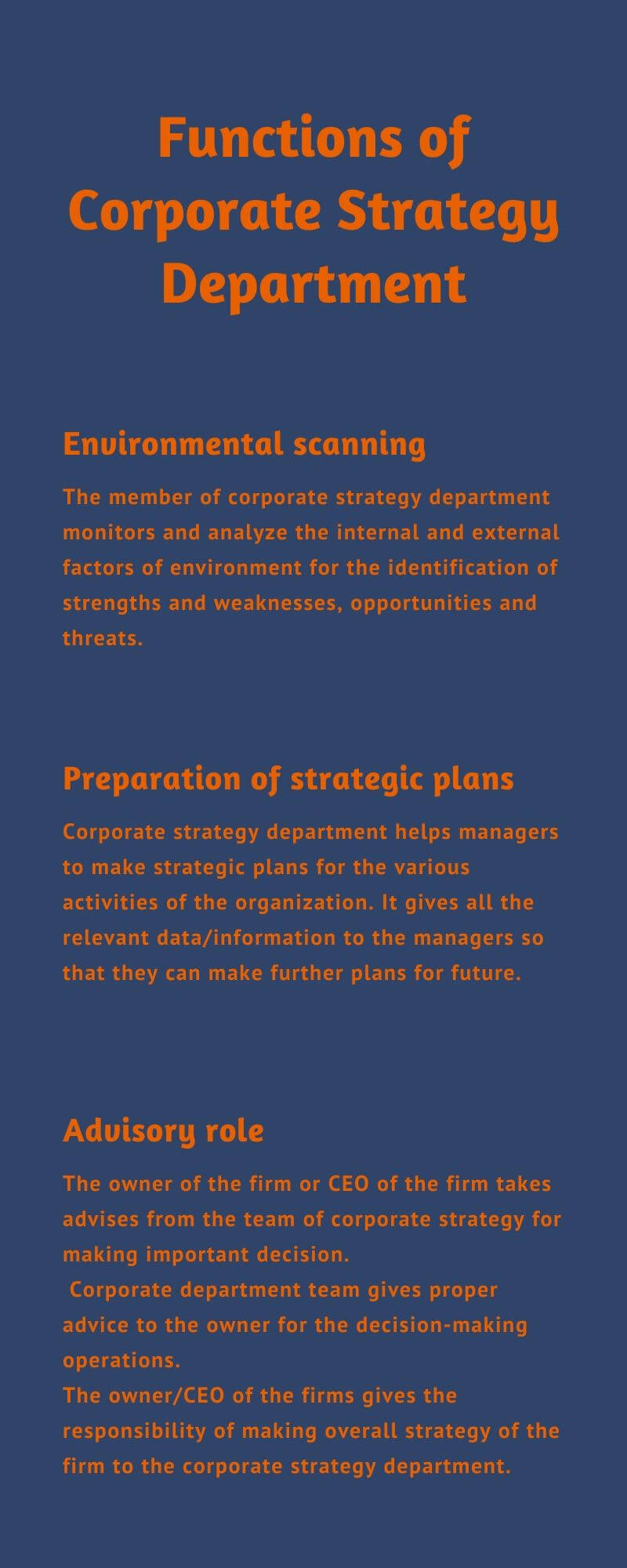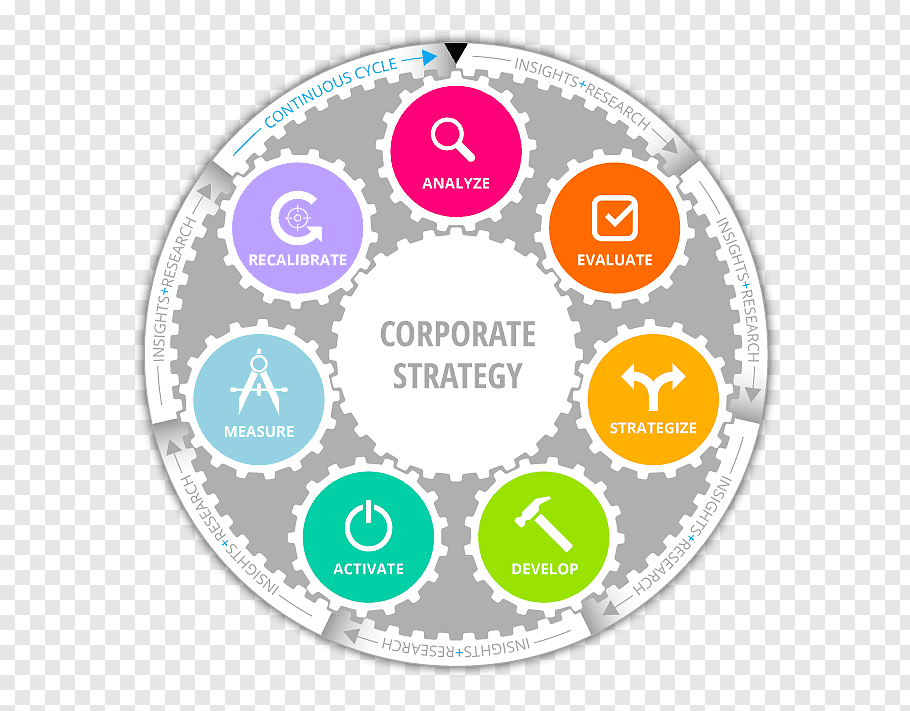As we all know, many firms uses various types of strategies. They do so for accomplishing their set goals and objectives. Basically, in a corporate, the firms uses corporate level strategy. These strategy particularly focuses on single industry.
The strategy that a corporate use is specifically referred as Corporate Level Strategy.
In this blog, we will learn in detail about, Corporate Level Strategy.
Table of Contents
What is Corporate Level Strategy?
Corporate level strategies are also known as Grand strategies.
Basically, Corporate Strategies are those strategies which are made specifically by the top level of management. It is made in order to define a specific target for the achievement of business goals.
C.L.S also act as a blue print for further plans of an organisations.
Features of Corporate Level Strategy

Given below are the following features of C.L.S.:
Management approach
Chiefly, Corporate level strategy is the approach of higher management. Because, these strategies are developed by the higher level management.
These are made for the overall growth of the firm. And also for determining the further opportunities in future.
Describes orientation
Corporate level strategy also describes the orientation of the firm. And it also provides the direction in the long run. It gives all the orientation necessary for the firms in their current as well as for upcoming further strategy for achieving the goals.
Future oriented
The corporate level strategies are obviously future oriented. After all these strategies are made on the basis of future goal and objectives of the firm.
In fact, these strategy helps the firm to accomplish their future goals and objectives. It also commands to achieve it in an efficient manner.
Decision based
Corporate level strategies are based basically on two-way flow of information as well as of resources among the various level of management of the company.
Meanwhile, it takes its decision on the basis of certain circumstances which can or may occur in future.
Goal-oriented
The corporate level strategies are specifically based on the goal of the firm. Corporate level strategies are especially made for the achievement of the goal of an organization.
These strategies are made in such a manner that it surely helps the firm to achieve its goals.
Types of Corporate Level Strategy
Given below are the following 4 types of Corporate level strategy:
- Stability strategy
- Expansion Strategy
- Retrenchment Strategy
- Combination Strategy
Stability Strategy
Generally, stability strategy is the strategy in which firms is satisfied with its present position. Therefore, it decides not to adopt any new changes in its working. Hence, continues with its present work.
In fact, in this strategy the firm stops spending its money on expansion. It neither produce nor introduce any new product in the market.
Given below are the following three types of Stability strategy:
- No change Strategies
- Profit Strategies
- Pause/Proceed with caution Strategy
No change Strategies
It is also a types of stability strategy. In this, the firm decides to do nothing new and continue further with its present current work.
It doesn’t mean that there will be the absence of strategy, the ‘no decision’ is itself a further strategy.
Profit Strategies

Profit strategy is the strategy in which the old products as well as technology is replaced by the new one.
It does not require any further new investment hence, it’s not a growth strategy.
Basically, it is done for a short run and after sometime the new technology will be again replaced by the old one.
Pause/Proceed with caution Strategies
Proceed/ pause with caution strategy is basically the third type of stability strategy. In these strategy, the firm postpone its plans and actions till the best opportunity strikes at the door.
Basically, it is the temporary step occupied by the firm till the best opportunity comes.
Expansion Strategy
Expansion strategy is also called growth strategy.
Growth strategy is the strategy which is adopted by the firm when it wants to expand itself. Overall firm’s try to achieves the faster growth, higher profit, brand expansion, occupy larger market share, etc.
In this strategy, the firm decides to grow the scope of its overall business operations.
Retrenchment Strategy
These are the strategy in which the firm occasionally reduces its some of the business operations. It do so, in order to cuts the expenses for becoming more financial stable.
It is adopted during the time of recession, re-organization of firm, and during tough situation.
Given below are the following three types of Retrenchment strategies:
- Turnaround Strategy
- Divestment Strategy
- Liquidation Strategy
Turnaround Strategy
Turnaround strategy can also be called as restricting strategy.
It is a retrenchment strategy, in which the firm eventually turn its negative point into positive point.
Undeniably, it converts loss-making firm into a profit-making firm, it makes firm profitable again.
Divestment Strategy
Divestment strategy is also a retrenchment strategy. In these, the firm either reduce or stops investing money in its non-profitable operations.
It do so, to allocate resources and invest them in that part of the firm that is still profitable for the firm.
Liquidation Strategy
Liquidation strategy is also another type of the retrenchment strategy. It is not only considered as the most unattractive but also referred as unpleasant strategy acquire by the firm.
In this strategy, the firm sells all its assets and also close down its all business operations.
Combination Strategy
Combination strategy is the strategy, in which the firm uses the combination of other strategies (i.e. stability, expansion or retrenchment) simultaneously.
It is implemented when firm wants to formulate different strategies at a time in same business for improving the efficiency of business.
Components of Corporate Level Strategy

Given below are the following four components of corporate level strategy:
- Visioning
- Objective setting
- Allocation of resources
- Strategic trade-offs
Visioning
Basically, visioning implies the setting of organization’s high level direction viz. mission, vision and corporate values.
Objective setting
Generally, objective setting creates a vision of high level objectives for the company whose span is 3-5 years.
Allocation of resources
Allocation of resources are referred to those decisions which are concerned with the efficient distribution of human as well as capital resources.
Strategic trade-offs
Strategic trade-offs are chiefly the central part of corporate strategy planning. Of course, it is impossible to take the advantages of all the opportunities every time.
Therefore, the manager takes decision by bearing some risk.
Also Read: Social Audit-Procedure for Successful Social Performance
Functions of Corporate Strategy Department

Given below are the following three functions of corporate strategy department:
Environmental scanning
The member of corporate strategy department particularly monitors and analyze the internal as well as external factors of environment. It do so, for the identification of strengths, weaknesses, opportunities and threats.
Preparation of strategic plans
Corporate strategy department also helps managers to make strategic plans for the overall activities of the organization. Moreover, it gives all the relevant data/information to the managers so that they can make further plans for future.
Advisory role
Generally, the owner of the firm or CEO of the firm, takes advises from the team of corporate strategy for taking important decision.
Corporate department team gives proper advice to the owner for the further decision-making operations.
Given below are the following two advisory role:
- Teaching role: The firm owner calls corporate strategy team particularly for helping managers of different departments. It do so, for learning concepts of planning. And also to know how to achieve the tasks effectively which they have planned before.
- Generating strategy: The member of corporate strategy department are responsible for generation of corporate plans as well as strategy.

The owner/CEO of the firms gives the responsibility of making overall strategy of the firm to the corporate strategy department.
Importance of Corporate Level Strategy
Given below are the following importance of CLS:
Allocation of resources
Corporate level strategy not only helps the firm for the allocation of its resources but also use them in various investment opportunities. It allocates all the resources in such a way that the overall resources can be fully utilized.
For running successful business
Corporate level strategy makes strategies especially for the various department of the firm. Meanwhile, it do it, so that they can run a successful business for a long run.
It makes strategies as per the working of the corporate so that the business can be run successfully.
Drives performance
Generally, corporate level strategy directs the employees of the firm to work as per their guidelines. And it also improves the performance of the employees.
Improves competitive position
Corporate level strategy not only helps the firm to grow but also gives guidelines to compete with other firms.
In fact, helps in managing the activities as well as operations for improving the competitive position of the firm.
Profit maximization
Corporate level strategy helps the organization significantly for achieving the maximum profit through various strategies.
It also provides combination of strategies for the accomplishment of objectives. So that, the firm can earn maximum profit at limited risk.
Conclusion
On the whole, corporate level strategy is an effective strategy for the corporate. Through which, the company can grow faster in for a long run with limited risk.
It also provides various strategies as well as the combination of strategies for achieving the objectives of the firms. It also helps other departments so that they can complete their task in an efficient way.
In short, every corporate must formulate corporate level strategy for running a successful enterprise.
Also Read: Entrepreneurial Development Program- 1 Key for Becoming Entrepreneur
FAQ
(Ans.) Generally, CLS stands for Corporate Level Strategy. Corporate Level Strategy defines plans for the specific target of corporate for achieving its overall business goals in long run.
(Ans.) Basically, corporate level strategy not only maximizes the business profitability but also maintains the financial success of corporate in the future.
(Ans.) Starbucks corporate strategy particularly focus on the company’s long-term growth. Starbucks company makes efforts especially for expanding its business in the emerging market.
Most importantly expansion of business in developing nations is the corporate strategy of the Starbucks.
